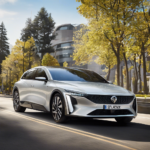Despite the challenges and setbacks, the future of autonomous vehicles remains promising and is poised to revolutionize the way we move. The coming years will see further advancements and a gradual integration of self-driving technology into our daily lives. While fully autonomous cars cruising down city streets may not be an everyday sight just yet, significant progress is being made behind the scenes. So, what can we expect from this transformative technology in the near future?
One of the key areas of development is the improvement of sensor technology and data processing capabilities. Autonomous vehicles rely on an array of sensors, including cameras, LiDAR, radar, and ultrasonic sensors, to perceive their surroundings. These sensors generate vast amounts of data, which needs to be processed quickly and accurately. The focus is now on enhancing sensor fusion, enabling vehicles to integrate and interpret data from multiple sensors to create a detailed and reliable understanding of the environment. This will improve the accuracy of object detection, localization, and path planning, making autonomous vehicles more responsive and safer.
Another critical aspect is the development of advanced driver assistance systems (ADAS). ADAS features like adaptive cruise control, lane-keeping assist, and automatic emergency braking are already available in many modern vehicles. These systems provide a level of automation that enhances safety and reduces driver workload. The future will see the expansion and refinement of these technologies, with more vehicles offering higher levels of ADAS, bridging the gap between traditional cars and fully autonomous vehicles.
As autonomous vehicle technology evolves, regulatory frameworks will need to adapt and keep pace. Governments and regulatory bodies worldwide are working to establish consistent and comprehensive guidelines for the testing, deployment, and operation of self-driving cars. This includes defining performance standards, safety protocols, and liability frameworks to ensure public trust and encourage innovation. Clear regulations will provide a regulatory sandbox to test and validate autonomous vehicles, fostering their safe and widespread adoption.
The next few years will also witness the emergence of specialized use cases for autonomous vehicles. These vehicles are particularly well-suited for tasks that require repetitive and predictable routes or operate within controlled environments. For example, autonomous buses and shuttles are being developed for last-mile transportation in urban areas, offering a more efficient and cost-effective solution for short-distance travel. Similarly, self-driving trucks for freeway travel and autonomous delivery vehicles for e-commerce packages are gaining traction. These targeted applications will help demonstrate the benefits of autonomous technology and build public acceptance.
The integration of autonomous vehicles into smart city infrastructure is another exciting prospect. As cities become increasingly connected, autonomous vehicles can communicate with traffic signals, parking systems, and other vehicles to optimize traffic flow, reduce congestion, and improve safety. This level of connectivity will enable more efficient transportation systems, reducing travel times and emissions. Cities can also benefit from autonomous vehicles for tasks such as waste management, road maintenance, and public safety, making urban environments more sustainable and livable.
While much of the focus has been on self-driving cars, it’s important to note that autonomous technology is also making significant strides in other domains. Autonomous drones and delivery robots are being deployed for last-mile logistics, while self-driving ships and airplanes are being developed for cargo transportation. These advancements highlight the versatility and impact of autonomous technology across various industries, creating new opportunities and reshaping business models.
Despite the challenges that lie ahead, the future of autonomous vehicles is brimming with potential. With continued investment in research and development, collaboration between industry stakeholders and regulators, and public education, we can expect to see more autonomous vehicles on our roads and in our communities. While there may be a gradual rollout of fully autonomous vehicles, the integration of advanced driver assistance systems and targeted use cases will pave the way for a safer, more efficient, and sustainable transportation ecosystem. The journey towards a fully autonomous future is underway, and the benefits it promises are well worth the wait.










